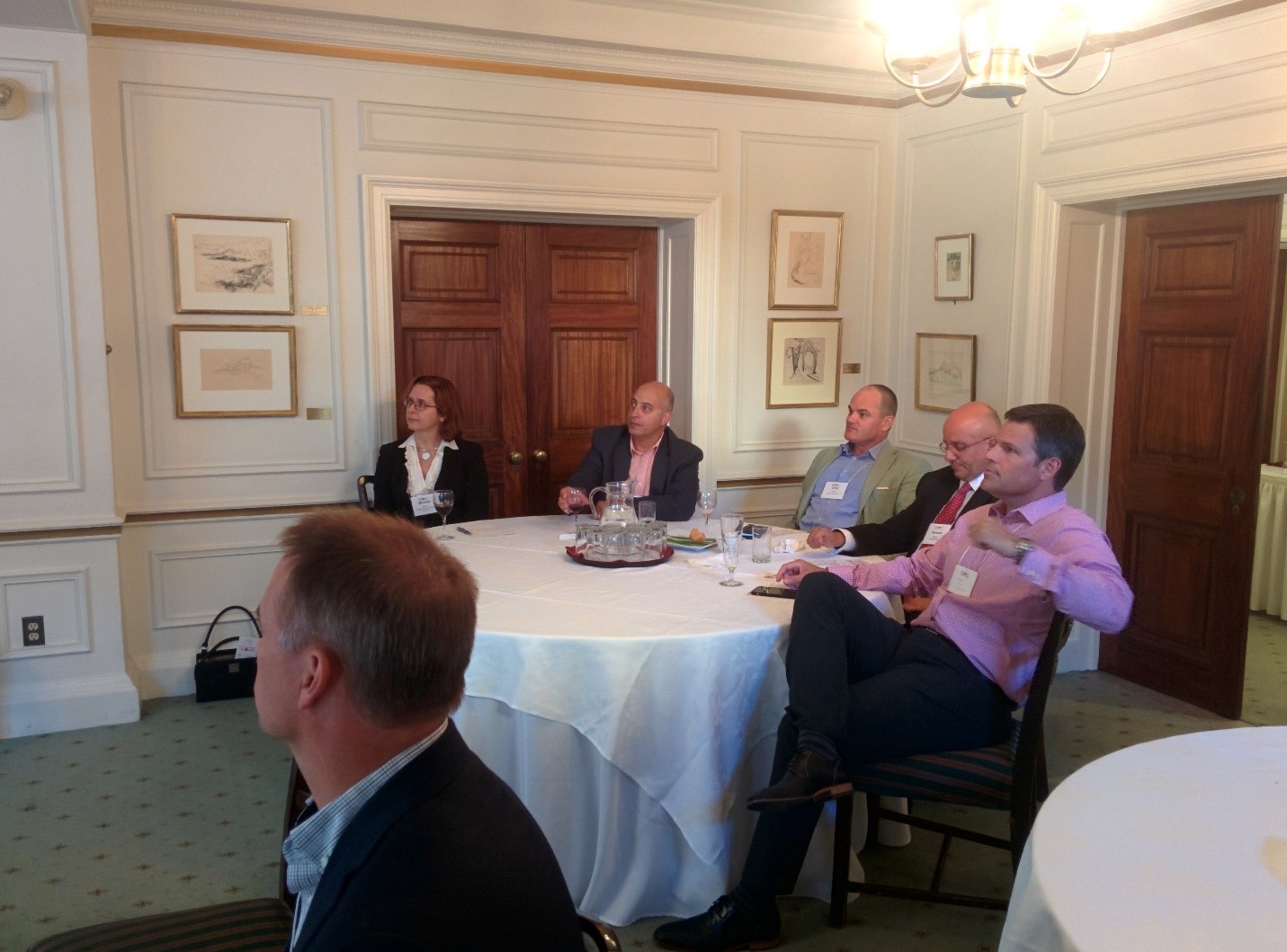The Toronto Chapter hosted an event in September 2015 on the Internet of Things featuring Shawn Sanderson, VP IoT Telus as the speaker.
The following are notes from the session:
What is the Internet of Things?
Interconnection of systems, people, and everyday objects to capture, analyze, manage, and exchange information.
There is massive growth in IoT
- 114 million by 2018 in Canada (individual devices) – not on LTE per say
- Investment in 2013 was $5.6B and project $21B by 2018
- Adoption is moving from 6% adopted now to 30% in the next 30 months
Third wave:
- Stand alone
- Internet
- All devices will be connected (how do we get the data?)
A day in the life scenario
Sarah:
- Wakes up at 6:30 (alarm clock may start earlier depending on her calendar)
- Smart scale connected to her Doctor when she goes to the washroom
- Coffee machine kicks off at 7:00
- If low on milk refrigerator adds her milk to the list that gets transmitted automatically
- Once she steps in the car, home disconnects power
- Car maintenance shows up automatically when drop by dealership
- While walking during lunch step tracker collect info and pass it to her Doctor
- Using her smart watch she check on her dog at home
- Going back home, garage door opens automatically
- Using heart beat home doors unlock
- Home starts music and food is delivered and video continues where she left of
- Sleep armband monitor her sleep and transform data to her Doctor
IoT is not about technology, but rather is about improving our lives à Interconnection of things to provide data (Big Data)
Privacy by design is to maintain privacy and provide ability to audit trail all data
Patient journey, (In the prairies for example):
- Need to drive a couple of hours to see the Dr. (Can I serve a patient without him driving in using video conference? Knowing that his record made it to Dr. the night before?)
- Parking on my surgery day might be painful, cameras will help to welcome him and tell him which surgery room to go to leveraging digital signage (colors on screen will help with emergencies, etc..)
- Bracelet given to patient will show his status and location and Dr tablet will have all info so no wasted time reading when meeting him
- All assets (e.g. equipment, rooms) have already been booked in advance for his operation (e.g. In regular office scenario – if rooms are booked in your building and no one is present, it can automatically detect no one is present and release the booking to help other people looking for rooms)
- Wearables have all patient info and can provide audit trail
Other examples:
- Fridge can detect what is missing from the product labels and it sends it to you and provide the coupons and once you walk in Longos it detect the isle you are in and help you select.
- Heat mapping is used in retail space frequently, it provides physical proof for how successful a particular promo, by showing where people gather in the store. It may also provide input into where to place product to move it faster. Telus has been very active in this space.
- Life safety application for your family: Car accident, wearables will show number of people in the car, Dr had your status (diabetes), Doctors in ambulance have all data before they show up leveraging your personal health profile.
- How can city spends less money leveraging technology? Garbage collection will happen only when bins are full. You can also detect if workers are working or not (location, movement)
Questions that lead to dialog on IOT:
- What does IoT mean for specific organizations?
- Why would you invest in something?
